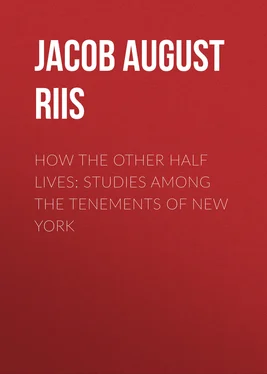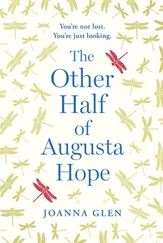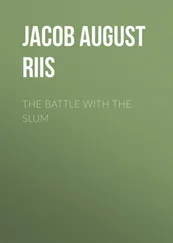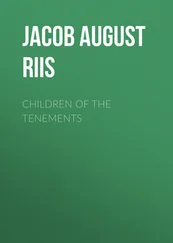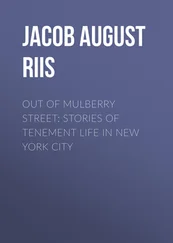Jacob August Riis - How the Other Half Lives - Studies Among the Tenements of New York
Здесь есть возможность читать онлайн «Jacob August Riis - How the Other Half Lives - Studies Among the Tenements of New York» — ознакомительный отрывок электронной книги совершенно бесплатно, а после прочтения отрывка купить полную версию. В некоторых случаях можно слушать аудио, скачать через торрент в формате fb2 и присутствует краткое содержание. Жанр: foreign_prose, sociology_book, foreign_antique, на английском языке. Описание произведения, (предисловие) а так же отзывы посетителей доступны на портале библиотеки ЛибКат.
- Название:How the Other Half Lives: Studies Among the Tenements of New York
- Автор:
- Жанр:
- Год:неизвестен
- ISBN:нет данных
- Рейтинг книги:3 / 5. Голосов: 1
-
Избранное:Добавить в избранное
- Отзывы:
-
Ваша оценка:
- 60
- 1
- 2
- 3
- 4
- 5
How the Other Half Lives: Studies Among the Tenements of New York: краткое содержание, описание и аннотация
Предлагаем к чтению аннотацию, описание, краткое содержание или предисловие (зависит от того, что написал сам автор книги «How the Other Half Lives: Studies Among the Tenements of New York»). Если вы не нашли необходимую информацию о книге — напишите в комментариях, мы постараемся отыскать её.
How the Other Half Lives: Studies Among the Tenements of New York — читать онлайн ознакомительный отрывок
Ниже представлен текст книги, разбитый по страницам. Система сохранения места последней прочитанной страницы, позволяет с удобством читать онлайн бесплатно книгу «How the Other Half Lives: Studies Among the Tenements of New York», без необходимости каждый раз заново искать на чём Вы остановились. Поставьте закладку, и сможете в любой момент перейти на страницу, на которой закончили чтение.
Интервал:
Закладка:
Sunless and joyless though it be, Blind Man’s Alley has that which its compeers of the slums vainly yearn for. It has a pay-day. Once a year sunlight shines into the lives of its forlorn crew, past and present. In June, when the Superintendent of Out-door Poor distributes the twenty thousand dollars annually allowed the poor blind by the city, in half-hearted recognition of its failure to otherwise provide for them, Blindman’s Alley takes a day off and goes to “see” Mr. Blake. That night it is noisy with unwonted merriment. There is scraping of squeaky fiddles in the dark rooms, and cracked old voices sing long-forgotten songs. Even the blind landlord rejoices, for much of the money goes into his coffers.

UPSTAIRS IN BLINDMAN’S ALLEY.
From their perch up among the rafters Mrs. Gallagher’s blind boarders might hear, did they listen, the tramp of the policeman always on duty in Gotham Court, half a stone’s throw away. His beat, though it takes in but a small portion of a single block, is quite as lively as most larger patrol rounds. A double row of five-story tenements, back to back under a common roof, extending back from the street two hundred and thirty-four feet, with barred openings in the dividing wall, so that the tenants may see but cannot get at each other from the stairs, makes the “court.” Alleys—one wider by a couple of feet than the other, whence the distinction Single and Double Alley—skirt the barracks on either side. Such, briefly, is the tenement that has challenged public attention more than any other in the whole city and tested the power of sanitary law and rule for forty years. The name of the pile is not down in the City Directory, but in the public records it holds an unenviable place. It was here the mortality rose during the last great cholera epidemic to the unprecedented rate of 195 in 1,000 inhabitants. In its worst days a full thousand could not be packed into the court, though the number did probably not fall far short of it. Even now, under the management of men of conscience, and an agent, a King’s Daughter, whose practical energy, kindliness and good sense have done much to redeem its foul reputation, the swarms it shelters would make more than one fair-sized country village. The mixed character of the population, by this time about equally divided between the Celtic and the Italian stock, accounts for the iron bars and the policeman. It was an eminently Irish suggestion that the latter was to be credited to the presence of two German families in the court, who “made trouble all the time.” A Chinaman whom I questioned as he hurried past the iron gate of the alley, put the matter in a different light. “Lem Ilish velly bad,” he said. Gotham Court has been the entering wedge for the Italian element, who until recently had not attained a foothold in the Fourth Ward, but are now trailing across Chatham Street from their stronghold in “the Bend” in ever increasing numbers, seeking, according to their wont, the lowest level.
It is curious to find that this notorious block, whose name was so long synonymous with all that was desperately bad, was originally built (in 1851) by a benevolent Quaker for the express purpose of rescuing the poor people from the dreadful rookeries they were then living in. How long it continued a model tenement is not on record. It could not have been very long, for already in 1862, ten years after it was finished, a sanitary official counted 146 cases of sickness in the court, including “all kinds of infectious disease,” from small-pox down, and reported that of 138 children born in it in less than three years 61 had died, mostly before they were one year old. Seven years later the inspector of the district reported to the Board of Health that “nearly ten per cent. of the population is sent to the public hospitals each year.” When the alley was finally taken in hand by the authorities, and, as a first step toward its reclamation, the entire population was driven out by the police, experience dictated, as one of the first improvements to be made, the putting in of a kind of sewer-grating, so constructed, as the official report patiently puts it, “as to prevent the ingress of persons disposed to make a hiding-place” of the sewer and the cellars into which they opened. The fact was that the big vaulted sewers had long been a runway for thieves—the Swamp Angels—who through them easily escaped when chased by the police, as well as a storehouse for their plunder. The sewers are there to-day; in fact the two alleys are nothing but the roofs of these enormous tunnels in which a man may walk upright the full distance of the block and into the Cherry Street sewer—if he likes the fun and is not afraid of rats. Could their grimy walls speak, the big canals might tell many a startling tale. But they are silent enough, and so are most of those whose secrets they might betray. The flood-gates connecting with the Cherry Street main are closed now, except when the water is drained off. Then there were no gates, and it is on record that the sewers were chosen as a short cut habitually by residents of the court whose business lay on the line of them, near a manhole, perhaps, in Cherry Street, or at the river mouth of the big pipe when it was clear at low tide. “Me Jimmy,” said one wrinkled old dame, who looked in while we were nosing about under Double Alley, “he used to go to his work along down Cherry Street that way every morning and come back at night.” The associations must have been congenial. Probably “Jimmy” himself fitted into the landscape.
Half-way back from the street in this latter alley is a tenement, facing the main building, on the west side of the way, that was not originally part of the court proper. It stands there a curious monument to a Quaker’s revenge, a living illustration of the power of hate to perpetuate its bitter fruit beyond the grave. The lot upon which it is built was the property of John Wood, brother of Silas, the builder of Gotham Court. He sold the Cherry Street front to a man who built upon it a tenement with entrance only from the street. Mr. Wood afterward quarrelled about the partition line with his neighbor, Alderman Mullins, who had put up a long tenement barrack on his lot after the style of the Court, and the Alderman knocked him down. Tradition records that the Quaker picked himself up with the quiet remark, “I will pay thee for that, friend Alderman,” and went his way. His manner of paying was to put up the big building in the rear of 34 Cherry Street with an immense blank wall right in front of the windows of Alderman Mullins’s tenements, shutting out effectually light and air from them. But as he had no access to the street from his building for many years it could not be let or used for anything, and remained vacant until it passed under the management of the Gotham Court property. Mullins’s Court is there yet, and so is the Quaker’s vengeful wall that has cursed the lives of thousands of innocent people since. At its farther end the alley between the two that begins inside the Cherry Street tenement, six or seven feet wide, narrows down to less than two feet. It is barely possible to squeeze through; but few care to do it, for the rift leads to the jail of the Oak Street police station, and therefore is not popular with the growing youth of the district.
There is crape on the door of the Alderman’s court as we pass out, and upstairs in one of the tenements preparations are making for a wake. A man lies dead in the hospital who was cut to pieces in a “can racket” in the alley on Sunday. The sway of the excise law is not extended to these back alleys. It would matter little if it were. There are secret by-ways, and some it is not held worth while to keep secret, along which the “growler” wanders at all hours and all seasons unmolested. It climbed the stairs so long and so often that day that murder resulted. It is nothing unusual on Cherry Street, nothing to “make a fuss” about. Not a week before, two or three blocks up the street, the police felt called upon to interfere in one of these can rackets at two o’clock in the morning, to secure peace for the neighborhood. The interference took the form of a general fusillade, during which one of the disturbers fell off the roof and was killed. There was the usual wake and nothing more was heard of it. What, indeed, was there to say?
Читать дальшеИнтервал:
Закладка:
Похожие книги на «How the Other Half Lives: Studies Among the Tenements of New York»
Представляем Вашему вниманию похожие книги на «How the Other Half Lives: Studies Among the Tenements of New York» списком для выбора. Мы отобрали схожую по названию и смыслу литературу в надежде предоставить читателям больше вариантов отыскать новые, интересные, ещё непрочитанные произведения.
Обсуждение, отзывы о книге «How the Other Half Lives: Studies Among the Tenements of New York» и просто собственные мнения читателей. Оставьте ваши комментарии, напишите, что Вы думаете о произведении, его смысле или главных героях. Укажите что конкретно понравилось, а что нет, и почему Вы так считаете.
